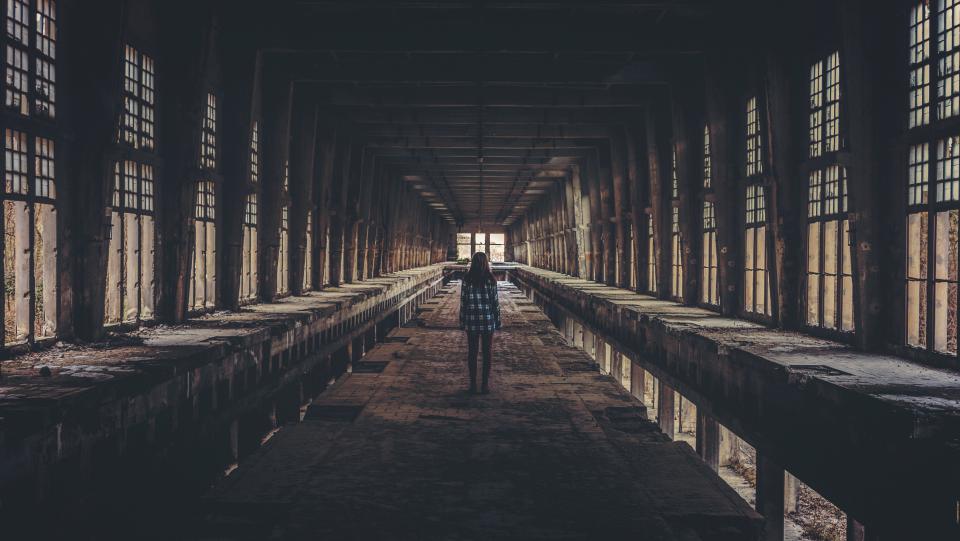
Trigger Warning: assault, sexual assault, violence against women, rape
Disclaimer: When discussing ‘women’, the author includes all people who identify as female. This piece is also not attempting to invalidate the experiences of those who don’t identify as female, including men, but is an opinion piece from the POV of a cis woman.
Monday 8th March 2021, and International Women’s Day is being celebrated. People share love and appreciation for the strength, courage and durability of their sisters, wives, girlfriends, friends and generally inspirational women. Two days later we’re confronted with the #NotAllMen social media response to the murder of yet another woman.
Sarah Everard followed all of the rules for avoiding harassment and murder that women are taught from the time we’re young: she was on the phone to her boyfriend, she walked along the main road, she wore bright clothing and was getting herself home well before midnight. Maybe she’s to blame for the wrong footwear; perhaps she’s to blame for not carrying her keys between the fingers of her free hand. Perhaps she’s to blame for forgetting her rape alarm or pepper spray, or for, in her terror, forgetting the emergency call function on an iPhone. Maybe she’s to blame for assuming the right to autonomy and life. In the next round of the routine victim-blaming of another murdered or assaulted woman, all of the above were cited, overtly or not, as potential explanations for her death. This was to be expected, although these ideas are seen less and less now that it’s generally understood that victim-blaming is passé. Instead, what rose from the ashes was a whole new category of victims who proclaimed their innocence, which came in the form of #NotAllMen.
#NotAllMen was the trending response to our outrage, and its sole purpose appeared to be victim-blaming with knobs on. Rather than say that women are to blame, people came together to let the world know that men weren’t necessarily to blame either. This makes sense, because generally, no man knows of anyone who has committed sexual assault. Yet a recent survey conducted by UN Women UK found that 97% of women aged 18-24 had been sexually harassed, while 80% of women of all ages said they had experienced sexual harassment in public spaces. So, what, are we dealing with a few bad apples? Perhaps.
It is plausible, however, that the men who touted their innocence simply don’t understand what sexual harassment looks like. Not only is the idea of the dark-alley-late-at-night inaccurate, but it’s popularity as an image of assault makes it incredibly difficult to implement change, as it essentially allows the perpetuators of sexual assault to absolve themselves of all responsibility. They’re able to proclaim innocence because they’ve never done that to a woman. But that isn’t the only form of sexual assault. I should state at this point that I am saying all of this with as much compassion as possible, understanding the difficulties of admitting your wrongdoing when you’re plagued by guilt, or never got told it was wrong in the first place. Indeed, it seems that the key issue is that, as a society, the concepts we hold and teach (or rather, don’t) concerning consent and sexual assault are blurry, and arguably walking on eggshells around the feelings of men who, understandably, don’t want to be educated on what exactly it is that they did wrong – men in our lives who we often love. It is these men who may be guilty of assault, whether they knew it at the time or not: guilty of pursuing somebody who was clearly uncomfortable or uninterested in a sexual manner, or of an unwanted touch; of sending nudes without consent, or not listening to any hint of a ‘No’. It doesn’t look like the alley – it looks like the logical conclusion of being taught as a small boy in the playground that ‘If she says no, try again’. Because it is true that #NotAllMen rape, or act out of a conscious violence and malevolence towards the women in their lives, but it is also true that almost #NoMenWhatsoever are taught what consent looks and feels like.
In fact, #AlmostNobodyAtAll is taught what consent should be or taught the clear boundaries surrounding their physical and emotional selves. I know that I certainly wasn’t. Sarah Everard’s murder came as another one of the logical conclusions of what small children are taught: while little boys are taught to pursue, little girls are taught that if a boy hits you, or teases you, then he likes you. We’re taught to take it as a compliment. So we do – we rarely say no, and indeed, we were coerced into saying yes so often that it became normal before long. And how is that little boy supposed to know that it’s wrong to pursue a woman and act out of violence, anyway? Similarly, how are women who end up in violent relationships supposed to have known what was coming? How were they supposed to know that the obsessive control of a boyfriend who professes to adore them wasn’t anything more than a less-than-pleasant demonstration of his undying love for her? Until, of course, his undying love kills her.
I talk about these extremes firstly because they exist – these realities are far more common than we like to admit – and secondly because they’re interlinked. Because the attitude we have toward women’s testimonies of violence at the hands of men are all treated in a way which suggests we care more about protecting those who caused the damage. And while I have some beliefs about how the system has created, benefits from, and allows this violent manifestation of gender inequality, that isn’t the point. The point is that it really is time for change, and for men to get uncomfortable.
We can have conversations about consent all we like, but until men admit that they must absolutely be present at those educational talks, the organisations trying to educate us will be preaching to the choir. Yes, teach your children differently. Yes, listen to the stories of the women in your life and don’t try to explain their experience away. But, also, yes: admit to yourself if you’ve ever been a part of the problem, and then work hard to change. Because how are you supposed to teach your little boy any different if you don’t do the same for yourself?



Average Rating